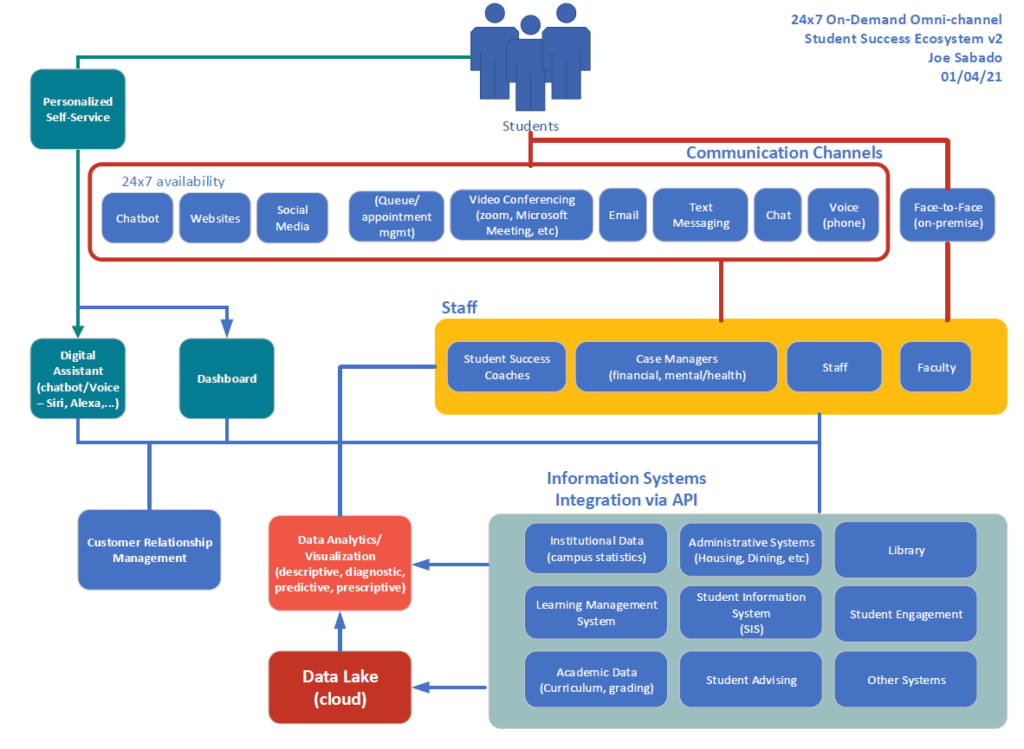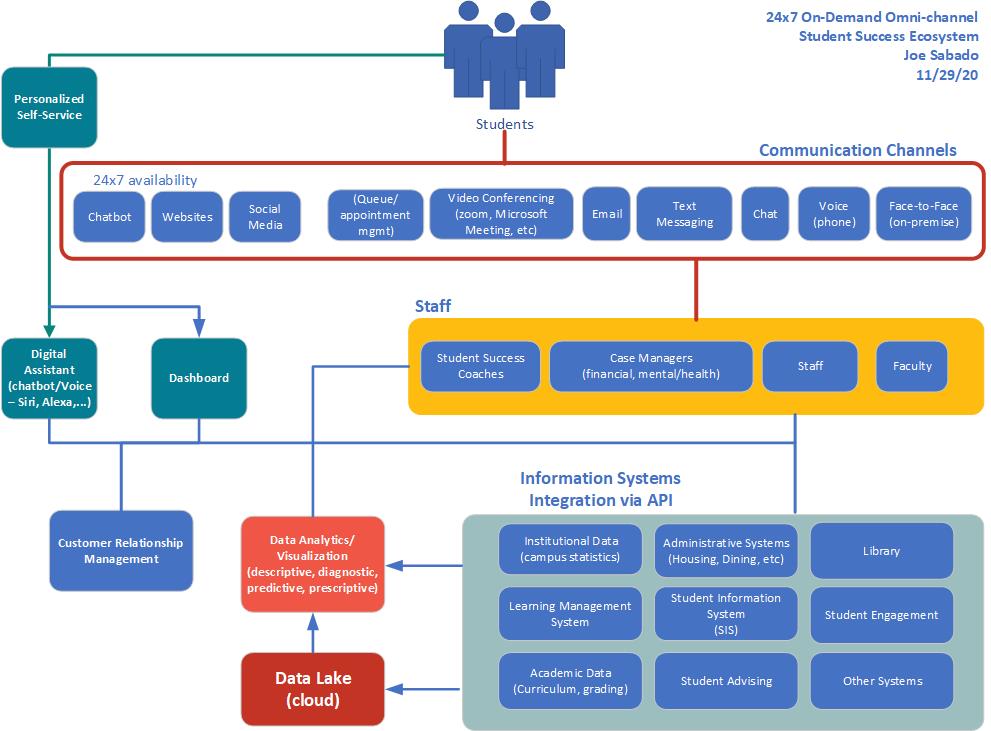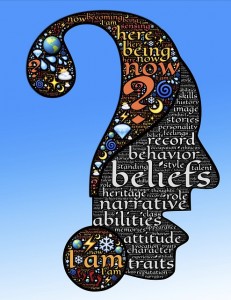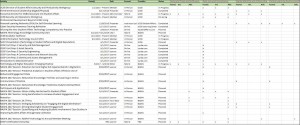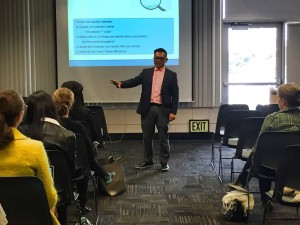
Graduate students’ digital reputation presentation at the Beyond Academic conference at UCSB. [photo courtesy of Don Lubach]
Do you have a fear of public speaking? Do you get anxious and nervous for days and weeks before you speak? I certainly was for most of my life. In elementary school, I pretended to be sick during the days of oral book reports. Throughout high school, I dreaded speaking in front of the class. One of the most painful three months of my life was when I was informed I had to speak at our graduation ceremony in front of a couple of thousands of people because I was the class Salutatorian. The prospect of doing the speech terrified me. Instead of enjoying the graduation ceremony and the months leading up to it, I was very anxious. In college, I had similar experiences. I still remember one particular year how terrified I was days leading up to when I had to speak in front of about 800 or so people at our campus, in front of parents and friends, at our annual show for the Filipino-American student organization.
Throughout my professional career, I felt hampered by my fear of public speaking until I decided to make a conscious effort to finally conquer it about three years ago. I felt as if I had some good perspectives/ideas to share, but I did not have the confidence to share them. I’ve enjoyed public speaking using the steps I share below, and I now look forward to them. In the last four years, I have spoken and presented in several public settings on my campus and even at a couple of professional conferences. I always dreamed of being a “keynote speaker” or doing a webinar, but I never thought I would have the opportunity because of my fear. I honestly would not have imagined being able to speak comfortably in front of many people. Still, by conquering my fear of public speaking, I have realized some dreams, present with colleagues I respect, met new folks, and developed relationships with them.
Here are some of what I did, which hopefully could help you too:
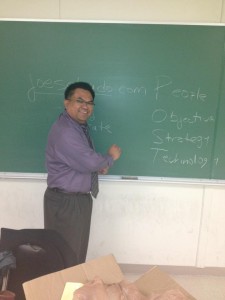
Guest presenter at a marketing course when I couldn’t use my PowerPoint slides. It became an even better session as a dialogue/conversation with the class.
1) Think about the root(s) of your fear and how to overcome them. When I finally started to think deeply about what made me nervous about public speaking through the years, it always came back to the idea that as one whose first language is Ilokano (a Filipino dialect), I was scared of being made fun of because I may “FOB” (fresh off the boat) accent. I was eleven when I immigrated to the US with my family, and I remember being made fun of by other kids because of how I spoke. That impacted me psychologically and contributed to the anxiety I felt before speaking in public. The other fear I had was that when I’m nervous, I had (and still do) the tendency to speak very fast. So, the possibility of “Fobbing” and speaking fast, especially in the first couple of sentences of my speech, really terrified me. However, as I thought about my past speeches, it dawned on me that once I started speaking, I was okay! Once I got going, I felt comfortable. it was the first couple of sentences that scared me. Given this knowledge, I purposely practiced my introductory statements to be slow and deliberate because I realized that if I could get through my first couple of sentences fine, I would be good with the rest of the speech or even a whole hour or two workshop. This step has saved me from days and even weeks of anxiety.
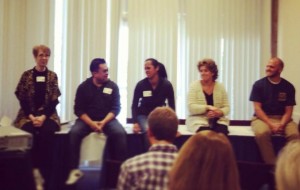
Panelist on student affairs career development at our campus.
2) Get experience in public speaking. I made it a point to seek out opportunities to speak. When asked to do mobile, social media, and web development workshops or about my personal experiences as a first-generation minority student, I accepted them even as terrified as I was. I have the expertise and am comfortable talking about these areas, so the content was not a problem for me. The more I spoke about these topics, the easier the experience became for me. What helped in my initial effort to conquer my fear, I asked a couple of my colleagues who are very good public speakers to join me for my workshops. By doing that, I felt less vulnerable and gained experience in the process. They became my crutches until I was ready to do events independently. The more I spoke, the more comfortable I became.

Keynote speaker for an outreach program for Filipino-American high school students.
3) Develop a niche area (or areas) you can feel comfortable speaking and understand your natural style. As mentioned above, there are topics I feel comfortable talking about, and the more I had the opportunity to speak about them, the better I got in my presentation styles, delivery, and content. I look back at my first few PowerPoint presentations, and I cringe at the amount of text I had per slide! I was using the slides as my crutches because I did not feel comfortable talking without reading what was on the slides. Nowadays, I’ve come to rely more on slides to augment/enhance my points through visuals and short text snippets. The slides are now intended for the audience rather than for me. There was one time when I was a guest speaker for a marketing course and had my PowerPoint presentation ready, but because the instructor could not log in to the computer, I spoke for about an hour without slides. It was one of my best presentations because it was conversational and free-flowing. Regarding style, I realized that I felt most comfortable and effective when I walked around and not behind a podium. I feel most comfortable when I feel the presentation was a conversation, not a monologue. I’ve developed a cadence in how I speak and how I move around when speaking. Engaging with the audience has become one of my habits when speaking.
There are additional steps I’ve learned along the process of conquering public speaking, but the three pieces of advice above have been the most helpful for me. Try them out and go share your ideas with the world!
